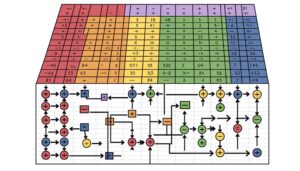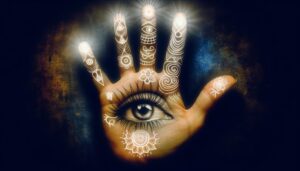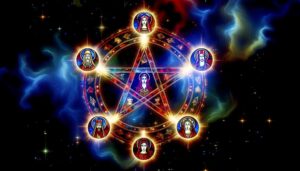Decoding the Meaning of the Freemason Symbol – A Step-by-Step Guide
The Freemason symbol, particularly the Square and Compass, represents the organization's philosophical and ethical principles, tracing back to medieval stonemason guilds. The square symbolizes morality and virtue, while the compasses denote the boundaries of appropriate behavior.
The letter 'G' stands for both God and Geometry, highlighting the blend of spiritual and intellectual pursuits within Freemasonry. The use of geometric shapes within the symbol signifies order, balance, and the pursuit of knowledge.
Embedded in these symbols are profound moral lessons advocating for fairness, personal growth, and humility. For a deeper understanding of these rich layers of meaning, further exploration reveals intriguing historical and cultural contexts.
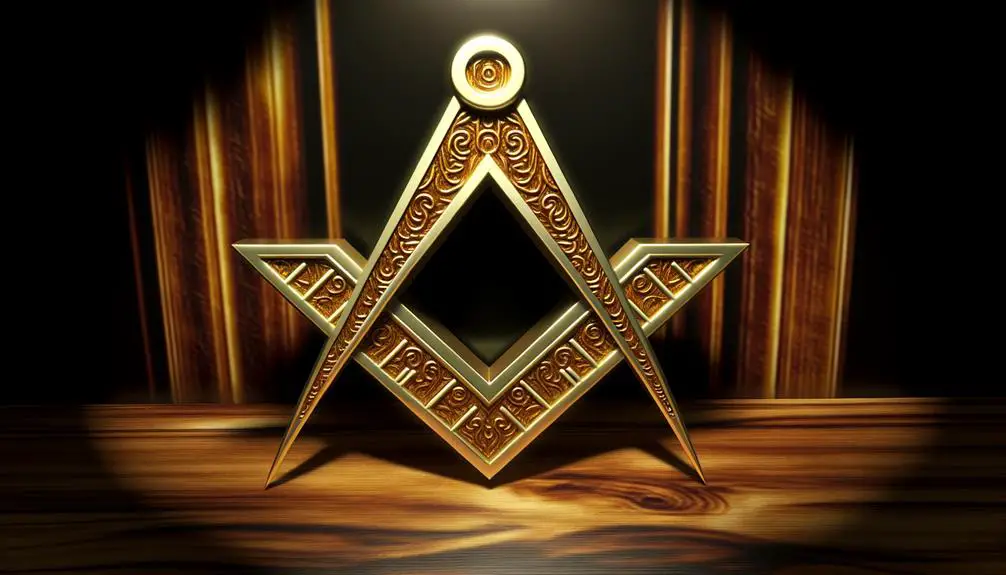
Key Takeaways
- The Square signifies morality and virtue, urging Freemasons to act with fairness and justice.
- The Compasses symbolize setting boundaries for propriety, promoting ethical conduct and balance in life.
- The Letter 'G' represents God and Geometry, blending spiritual devotion with intellectual pursuit.
- Sacred geometric shapes in Freemasonry symbolize order, balance, and the pursuit of knowledge.
- Freemason symbols in rituals convey moral lessons of personal growth, humility, and universal brotherhood.
Origins of Freemason Symbols
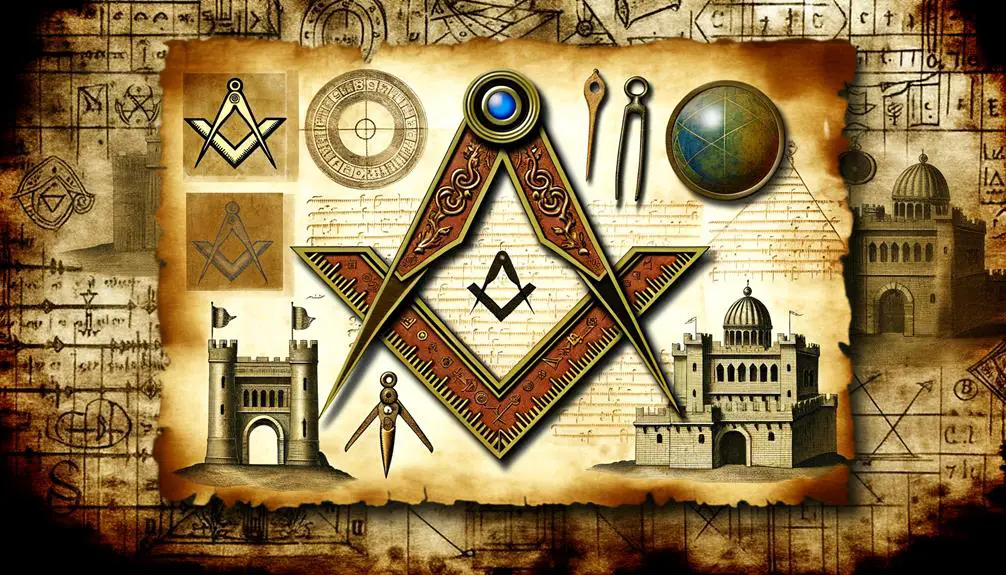
The origins of Freemason symbols can be traced back to the stonemason guilds of the Middle Ages, where these emblems served as both practical tools and esoteric representations of their craft and moral teachings.
During this period, operative masons employed symbols such as the square, compasses, and plumb line to guarantee precision in their architectural endeavors. Beyond their utilitarian function, these symbols began to embody deeper philosophical meanings, encapsulating principles of ethics, brotherhood, and self-improvement.
As the guilds evolved to speculative Freemasonry in the 17th century, these symbols were retained and reinterpreted to convey a broader moral and spiritual framework. Consequently, the iconography of Freemasonry evolved, bridging the tangible practices of medieval stonemasonry with the abstract ideals of enlightenment thought.
The Square and Compass
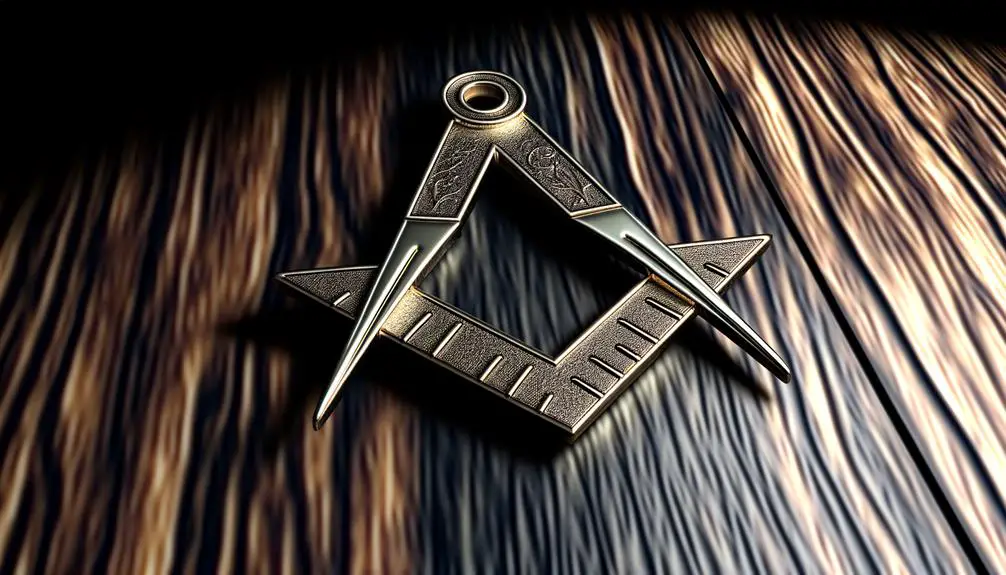
As symbols like the square and compasses emerged from the practical tools of medieval stonemasons, they gained profound significance within the moral and spiritual teachings of speculative Freemasonry. The square represents morality, teaching Masons to square their actions by the square of virtue. The compasses, on the other hand, symbolize the boundaries one must keep to remain within the bounds of propriety. Together, these tools encapsulate the essence of Freemason ethical conduct.
| Symbol | Practical Tool | Symbolic Meaning |
|---|---|---|
| Square | Tool for right angles | Morality and virtue |
| Compasses | Tool for drawing circles | Boundaries and propriety |
| Combined | Square and Compasses | Ethical conduct and balance |
| Application | Stonemasonry to Freemasonry | Moral and spiritual teachings |
The interplay of these instruments reflects the harmonious balance essential to Masonic philosophy.
The Letter 'G'
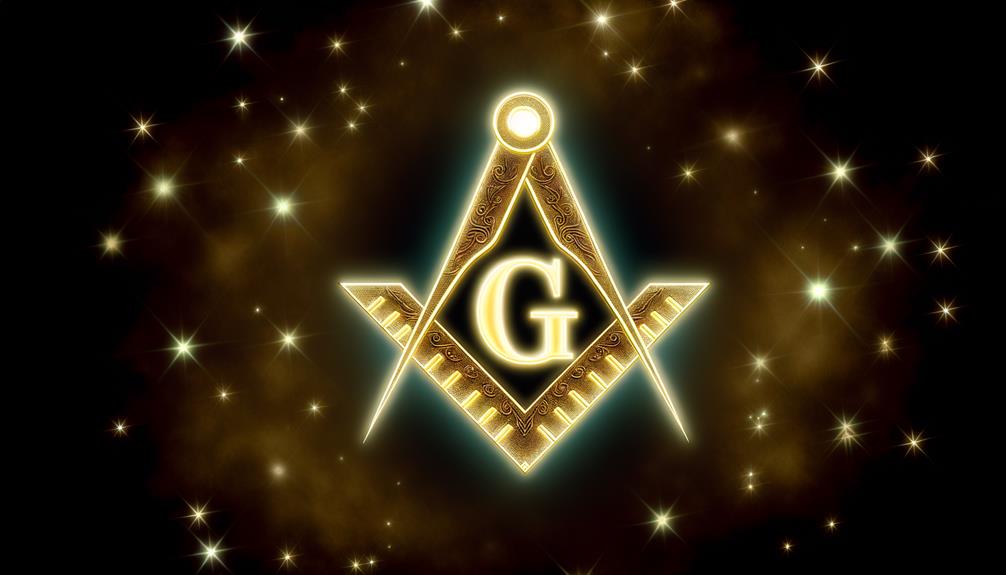
The letter 'G' within the Freemason symbol holds profound significance, encompassing both dual interpretations and geometric principles.
Historically, it is often seen as representing both God and Geometry, underscoring the fraternity's reverence for a higher power and the mathematical foundations of their craft.
This duality is deeply rooted in the Masonic tradition, reflecting a blend of spiritual and intellectual pursuits that have shaped the organization's ethos over centuries.
Dual Interpretations
Within the mysterious realm of Freemasonry, the letter 'G' is imbued with dual interpretations that carry significant symbolic weight and philosophical depth.
To start, it is often interpreted as representing 'God' or the 'Great Architect of the Universe,' emphasizing the fraternity's foundation on spiritual and divine principles. This interpretation aligns with Freemasonry's focus on morality and the pursuit of higher truths.
Furthermore, 'G' is also perceived as symbolizing 'Geometry,' a fundamental aspect of Masonic teachings that highlights the significance of order, measurement, and the sciences. Geometry, in this perspective, serves as a symbol for the structured and harmonious nature of the universe, reflecting the Masonic dedication to knowledge, equilibrium, and the interconnectedness of all things.
Geometric Significance
In the context of Freemasonry, the letter 'G' emerges as a profound symbol of geometric principles that underscore the fraternity's commitment to the intellectual and structural rigor inherent in the natural world. This emblematic letter represents geometry, the cornerstone of Masonic teachings, which is regarded as the foundation of architecture and the sciences.
Freemasons view geometry as a divine language that reveals the order and harmony of the universe. The letter 'G' also emphasizes the importance of precision, measurement, and balance, reflecting the fraternity's pursuit of knowledge and truth.
Historical Context
Understanding the symbolic significance of the letter 'G' in Freemasonry necessitates an exploration of its historical roots and the evolution of its meaning over centuries.
Traditionally, the 'G' is often interpreted as representing both God and Geometry, key pillars in Masonic philosophy. Its dual interpretation can be traced back to the Enlightenment era, where intellectuals sought to harmonize scientific inquiry with spiritual belief.
The inclusion of the 'G' within the Square and Compasses emblem highlights the balance between the divine and the rational. Historical Masonic texts reveal that the letter 'G' also symbolizes the Great Architect of the Universe, emphasizing the fraternity's reverence for a supreme, guiding force.
Therefore, the 'G' encapsulates profound theological and philosophical dimensions central to Freemasonry.
Symbolism in Geometry
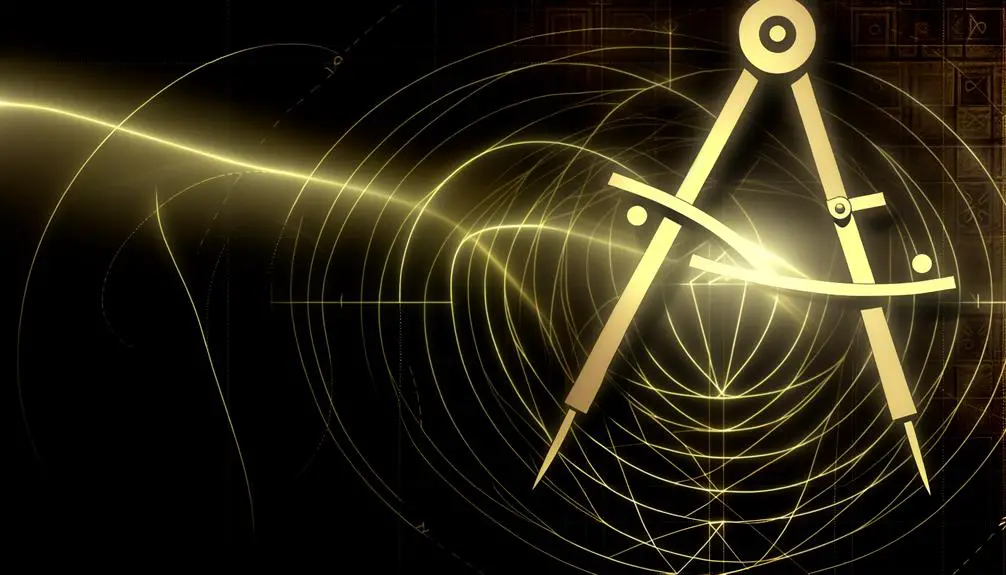
The symbolism in geometry holds a profound place in Freemasonry. Sacred geometric shapes like the square and compass embody core principles of the fraternity. Mathematical symbolism extends beyond mere tools; it represents order, balance, and the pursuit of knowledge.
Esoteric interpretations further imbue these shapes with meanings that connect the physical and metaphysical domains. This reflection of the Masonic journey towards enlightenment deepens the symbolism found in geometric shapes.
Sacred Geometric Shapes
Sacred geometric shapes, deeply embedded in the symbology of Freemasonry, serve as profound representations of the universe's inherent order and harmony. These shapes, often found in Masonic rituals and artifacts, embody principles of balance and proportion that transcend mere aesthetics. The use of geometry by Freemasons is not arbitrary but grounded in the belief that these shapes connect individuals to a higher, universal truth.
| Shape | Symbolism |
|---|---|
| Triangle | Represents stability and unity, often seen as divine |
| Square | Symbolizes morality and ethical behavior |
| Circle | Denotes eternity and the infinite nature of the cosmos |
| Pentagram | Represents protection and the human microcosm |
These shapes are more than mere symbols; they reflect a philosophical ideology that aligns with the Masonic pursuit of knowledge and self-improvement.
Mathematical Symbolism
Delving into the world of mathematical symbolism, Freemasonry employs geometric figures not merely as aesthetic elements, but as profound conveyors of philosophical and metaphysical truths. Central to Masonic symbolism is the Square and Compasses, embodying the precision, balance, and order inherent in the universe.
Geometry, known as the 'noblest of sciences,' forms the foundation for Masonic teachings, offering a structured lens to understand the cosmos and human existence.
- Square: Represents morality and the rectitude of conduct.
- Compasses: Symbolizes the limitation of desires and the pursuit of self-improvement.
- Circle: Reflects the eternal, infinite nature of the divine.
Esoteric Interpretations
Exploring beyond the visible dimensions of mathematical symbolism, the esoteric interpretations within Freemasonry extend the significance of geometric shapes to encompass deeper spiritual and metaphysical insights.
The square and compass, emblematic tools of the craft, symbolize the alignment of human actions with divine principles. The square represents earthly existence, moral rectitude, and ethical conduct, while the compass signifies the soul's journey towards higher understanding and spiritual enlightenment.
Triangular shapes often denote the triadic nature of existence, harmonizing the mind, body, and spirit. Circles, embodying eternity and unity, reflect the boundless nature of the cosmos.
Hence, Freemasonry's geometric symbolism serves as a profound metaphorical language, bridging the material and immaterial, guiding initiates toward esoteric wisdom and universal truths.
Moral Lessons Embedded

The Freemason symbol encapsulates a wealth of moral lessons that are integral to the fraternity's teachings, reflecting values such as integrity, humility, and the pursuit of knowledge. Each element within the symbol serves as a didactic tool, encouraging members to aspire towards ethical conduct and self-improvement.
The compass and square, for instance, remind members to:
- Act with fairness and justice, ensuring their actions are guided by moral principles.
- Cultivate personal growth, emphasizing continuous learning and self-reflection.
- Demonstrate humility, acknowledging their limitations and the value of others' contributions.
These lessons are not mere abstractions but are woven into the practical and philosophical framework of Freemasonry, aiding members in their personal and communal journeys toward enlightenment.
Influence of Ancient Cultures
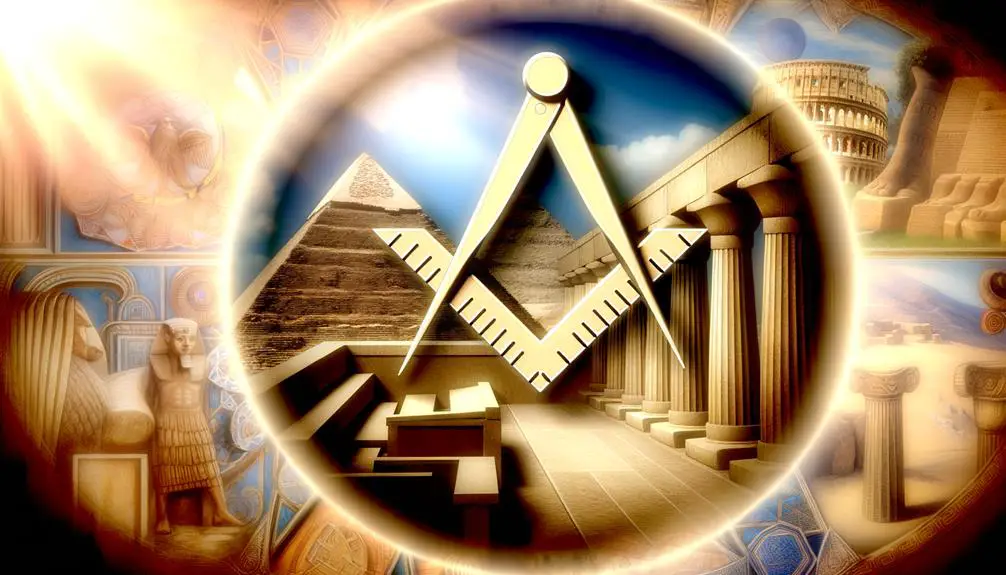
Drawing upon the rich tapestry of ancient civilizations, the Freemason symbol integrates elements from Egyptian, Greek, and Roman cultures, reflecting a profound synthesis of historical knowledge and philosophical thought.
The symbolism of the pyramid, derived from Egyptian architecture, signifies durability and enlightenment. Greek influences are seen in the emphasis on geometry and the pursuit of intellectual and moral excellence, echoing the teachings of Pythagoras and Platonic ideals.
Additionally, Roman contributions manifest in the adoption of architectural tools as symbols of structure and order, embodying the virtues of discipline and organization. This confluence of ancient wisdom underscores the Freemason symbol's role as a vessel for transmitting timeless principles and fostering a deeper connection with humanity's shared heritage.
Modern Interpretations

In contemporary contexts, the Freemason symbol continues to evolve, embodying modern values and societal advancements while retaining its foundational principles. This evolution reflects the dynamic nature of Freemasonry as it adapts to contemporary issues and perspectives.
The symbol now often signifies:
- Humanitarianism: Emphasizing charitable works and community service, aligning with broader social responsibility.
- Ethical Development: Representing personal growth, integrity, and the pursuit of moral excellence.
- Universal Brotherhood: Promoting inclusivity and unity among diverse groups, transcending cultural and religious boundaries.
These modern interpretations underscore the Freemason symbol's adaptability, ensuring its relevance in an ever-changing world. As society progresses, these symbols serve as a bridge between ancient traditions and contemporary ideals.
Symbolism in Freemason Rituals

How does the intricate symbolism in Freemason rituals encapsulate the order's esoteric teachings and ethical principles? Freemason rituals are steeped in symbolic language that conveys profound philosophical and moral lessons. Central symbols like the square and compass, the all-seeing eye, and the level and plumb rule serve as metaphors for personal development, ethical conduct, and the pursuit of enlightenment. These rituals employ allegory and symbols to impart lessons on virtue, integrity, and brotherhood.
| Symbol | Meaning | Ritual Context |
|---|---|---|
| Square and Compass | Moral and ethical boundaries | Initiation, Allegiance |
| All-Seeing Eye | Divine oversight and guidance | Vigilance, Wisdom |
| Level | Equality and fairness | Fellowship, Equality |
| Plumb Rule | Uprightness and rectitude | Moral Rectitude, Integrity |
This symbology fosters a deeper understanding of the order's core values.
Freemason Symbols in Popular Culture

Freemason symbols have permeated popular culture, appearing in various forms of media and public discourse, often carrying connotations that range from mystical to conspiratorial. These symbols, including the Square and Compasses and the All-Seeing Eye, frequently surface in:
- Films and television series: Movies like 'National Treasure' and shows like 'The Simpsons' often reference or depict Freemason symbolism.
- Literature: Novels such as Dan Brown's 'The Da Vinci Code' and Umberto Eco's 'Foucault's Pendulum' explore Masonic themes and iconography.
- Music and art: Iconic musicians and artists sometimes integrate Masonic imagery into their work, adding layers of intrigue and speculation.
Their pervasive presence underscores the public's fascination with the secretive nature and historical significance of Freemasonry.
Conclusion
The lasting importance of Freemason symbols lies in their rich historical context and multifaceted interpretations.
Especially, an estimated six million Freemasons worldwide continue to uphold these traditions, reflecting the profound impact of these symbols.
The Square and Compass, the Letter 'G', and geometric patterns serve as channels for moral and philosophical teachings, bridging ancient wisdom and modern thought.
These symbols remain a testament to the lasting legacy and cultural influence of Freemasonry across centuries.

